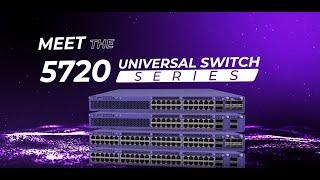For more information on Arista's solution for Network Virtualization, http://www.arista.com/en/solutions/network-virtualization
The physical data center switch plays an important role in delivering network virtualization.
1. IP Fabric: deep buffers, resilient, automated, scalable
Deploying network virtualization should not impact network performance. The data center switch must be able to maintain the 10/40/100 Gigabit Ethernet throughput performance with VXLAN capabilities enabled.
2. Network overlay visibility for monitoring and troubleshooting
Visibility from application to the virtualized network and the physical network is key to effectively troubleshooting issues.
3. North-south gateway to connect vms to physical hosts outside of the data center
Virtual machines communicate with host outside the virtualized network. Using hardware acceleration on the data center switch to move packets between the virtualized network and non-virtualized network ensures that there is no performance impact.
4. Physical endpoint bridging into the network overlay
The Top of Rack (ToR) switch is a natural place to bridge in servers and other devices, such as L4-7 appliances, that do not support virtualization, but need to communicate with vms and other resources in the virtualized network.
5. Automated provisioning via overlay controller integration
One of the promises of network virtualization is the ability to move workloads easily and more frequently, rather than legacy static resourcing. Automated provisioning of the network through integration to the overlay controller is key.
Network virtualization enables virtual machines (vms) to vMotion across racks, separating application connectivity from physical topology. Network virtualization is one aspect of Software Defined Networking (SDN).
The physical data center switch plays an important role in delivering network virtualization.
1. IP Fabric: deep buffers, resilient, automated, scalable
Deploying network virtualization should not impact network performance. The data center switch must be able to maintain the 10/40/100 Gigabit Ethernet throughput performance with VXLAN capabilities enabled.
2. Network overlay visibility for monitoring and troubleshooting
Visibility from application to the virtualized network and the physical network is key to effectively troubleshooting issues.
3. North-south gateway to connect vms to physical hosts outside of the data center
Virtual machines communicate with host outside the virtualized network. Using hardware acceleration on the data center switch to move packets between the virtualized network and non-virtualized network ensures that there is no performance impact.
4. Physical endpoint bridging into the network overlay
The Top of Rack (ToR) switch is a natural place to bridge in servers and other devices, such as L4-7 appliances, that do not support virtualization, but need to communicate with vms and other resources in the virtualized network.
5. Automated provisioning via overlay controller integration
One of the promises of network virtualization is the ability to move workloads easily and more frequently, rather than legacy static resourcing. Automated provisioning of the network through integration to the overlay controller is key.
Network virtualization enables virtual machines (vms) to vMotion across racks, separating application connectivity from physical topology. Network virtualization is one aspect of Software Defined Networking (SDN).
- Category
- Arista Networks
- Tags
- Aristanetworks, ethernet, big data
Be the first to comment






